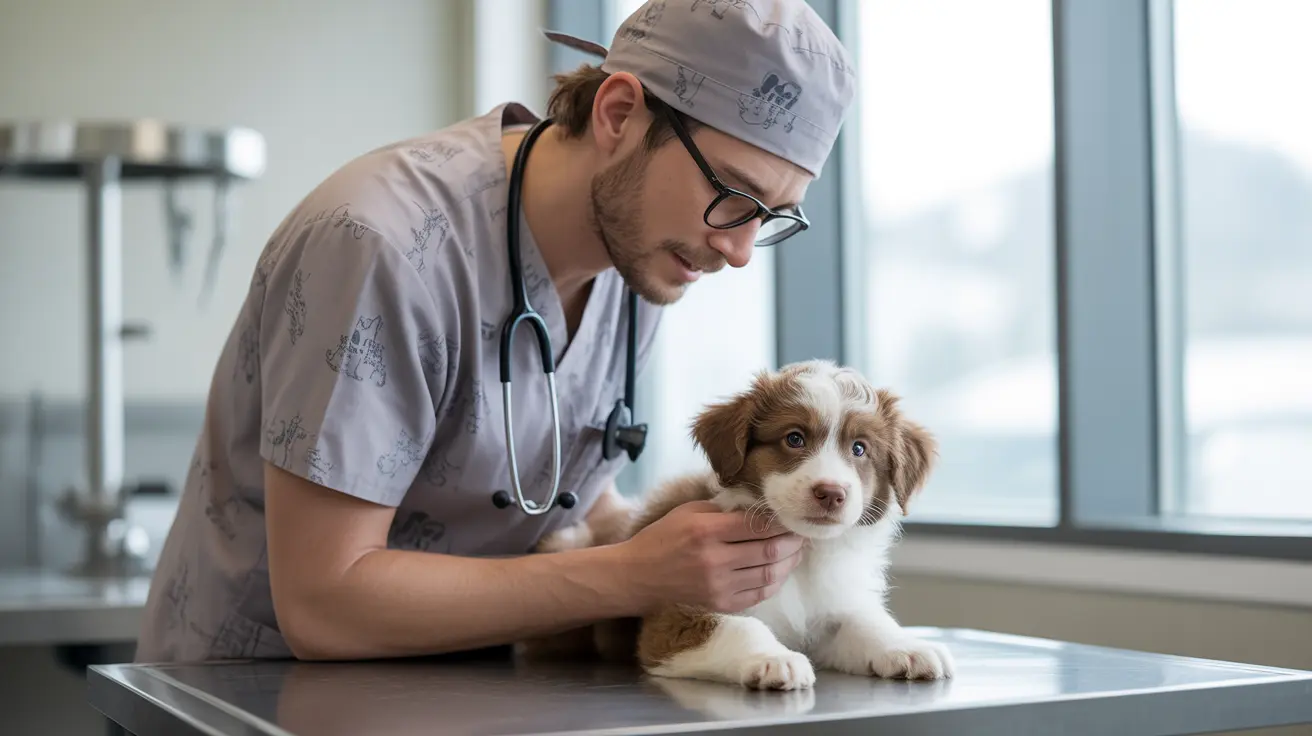An enlarged prostate in dogs is a common condition that affects many male canines, particularly as they age. This condition, medically known as prostatic hyperplasia, can significantly impact a dog's quality of life if left untreated. Understanding the signs, causes, and available treatments is crucial for every dog owner, especially those with older, unneutered male dogs.
In this comprehensive guide, we'll explore everything you need to know about enlarged prostate in dogs, from early warning signs to effective treatment options, helping you make informed decisions about your pet's health.
Understanding the Canine Prostate and Its Function
The prostate gland plays a vital role in male dog reproduction, producing fluid that nourishes and protects sperm. Located near the bladder neck and surrounding the urethra, this small but essential organ can become problematic when enlarged, affecting both urination and defecation.
Common Causes of Prostate Enlargement
Benign Prostatic Hyperplasia (BPH)
BPH is the most common cause of prostate enlargement in dogs, affecting nearly all unneutered males by age six. This condition occurs naturally with aging and is influenced by testosterone levels in the body.
Prostatic Infections
Bacterial infections of the prostate (prostatitis) can cause significant enlargement and discomfort. These infections may be acute or chronic and often require extensive antibiotic treatment.
Cancer and Other Conditions
Though less common, prostatic cancer can affect both neutered and unneutered dogs. Other conditions like cysts and abscesses may also contribute to prostate enlargement.
Recognizing the Signs
Dogs with enlarged prostates typically show several distinctive symptoms:
- Difficulty urinating or defecating
- Straining during bathroom breaks
- Blood in urine
- Ribbon-like stools
- Lethargy and decreased appetite
- Discomfort in the lower abdomen
- Changes in walking pattern
Diagnosis and Treatment Options
Veterinarians use various methods to diagnose prostate enlargement, including physical examination, imaging tests (X-rays and ultrasound), and laboratory analysis. The treatment approach depends on the underlying cause but may include:
- Neutering (for BPH cases)
- Antibiotics for bacterial infections
- Anti-inflammatory medications
- Surgery for severe cases or cancer
- Regular monitoring and follow-up care
Prevention and Long-term Management
Early neutering is the most effective preventive measure against BPH. Regular veterinary check-ups can help catch potential problems early, leading to better outcomes. For dogs already diagnosed with prostate enlargement, ongoing management and monitoring are essential for maintaining quality of life.
Frequently Asked Questions
What are the common signs and symptoms of an enlarged prostate in dogs?
Common signs include difficulty urinating or defecating, blood in urine, ribbon-like stools, lethargy, and discomfort in the lower abdomen. Some dogs may also show changes in their walking pattern or exhibit pain when moving.
How is an enlarged prostate in dogs diagnosed by veterinarians?
Veterinarians diagnose enlarged prostates through physical examination, rectal examination, imaging tests (X-rays and ultrasound), and laboratory testing of blood and urine samples. In some cases, tissue biopsies may be necessary.
What causes prostate enlargement in male dogs and which dogs are most at risk?
The main causes include benign prostatic hyperplasia (BPH), bacterial infections, and cancer. Older, unneutered male dogs are at highest risk, with almost all intact males developing some degree of enlargement by age six.
What treatment options are available for dogs with an enlarged prostate?
Treatment options vary based on the cause but may include neutering, antibiotics for infections, anti-inflammatory medications, and surgery in severe cases. The specific treatment plan is tailored to the underlying condition and severity of symptoms.
Can neutering prevent or treat benign prostatic hyperplasia in dogs?
Yes, neutering is highly effective in both preventing and treating BPH in dogs. It's considered the most reliable long-term solution for hormone-related prostate enlargement and can lead to significant improvement in symptoms within weeks of the procedure.
Conclusion
Understanding and addressing enlarged prostate in dogs is crucial for maintaining your pet's health and comfort. With proper veterinary care, most cases can be successfully managed or treated. If you notice any symptoms of prostate enlargement in your male dog, don't hesitate to consult with your veterinarian for proper diagnosis and treatment.






